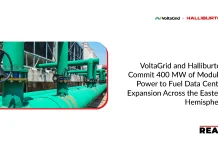In the fast-paced world of aviation, critical challenges like the efficient and safe refueling of aircraft are frequently encountered. Obstacles like leaks and spills on cumbersome equipment can lead to delays, and environmental hazards, and even jeopardize the safety of personnel and passengers.
Fortunately, there is a solution that addresses these concerns head-on: the aviation refueling hose. This innovative piece of equipment has revolutionized the refueling process, ensuring a seamless transfer of fuel while prioritizing safety and efficiency. Let’s take a closer look at this instrument in this detailed blog.
What is an Aviation Refueling Hose?
An aviation refueling hose is a specialized type of hose used to transfer fuel between aircraft and refueling equipment. These hoses are known by several names such as aircraft refueling hoses, aviation fueling hoses, aerial refueling hoses, or aircraft fuel hoses.
These hoses are designed to be resistant and flexible, allowing aviation fuel to circulate and reach different tanks. They are crucial for efficient in-flight refueling for the aerospace, military, and defense sectors. As aircraft refueling hose is widely used in modern, civil, and military aircraft, according to Extrapolate, the aviation refueling hose market is expected to reach a valuation of $3150.37 million by 2028.
How Does Aviation Refueling Hose Work?
Refueling of modern, civil, and military aircraft is usually carried out using a pressure method, where an aviation fuel truck hose with a suitable coupling is tightly attached to a tank coupling. Tanker trucks equipped with pumps, filters, measuring systems, and hoses are commonly used for refueling operations.
At big airports, underground fuel pipelines supply fuel to a hydrant in an airport pavement, and refueling is carried out via a pumping unit connected to an underground hydrant with a hose.
Types of Aviation Refueling Hoses Used for Fuel
The type of hose used for fuel depends on the specific application and the type of fuel being used. Some common types of fuel hoses include the following:
● Nitrile Rubber Hose
This is the most common type of fuel hose. It is constructed with a premium inner layer created using NBR (nitrile), an outer cover made from CR (neoprene), and a reinforcing spiral wrap. Trusted brands like Husky and Parker are known for producing these hoses.
● SAE 30R9 Fuel Injection Hose
This hose is mainly used with Electronic Fuel Injection (EFI) systems that are equipped with hose clamps and have working pressures of 100 PSI and more. It features a fluoroelastomer inner liner that is compatible with several types of fuel viz., oxidized gasoline, methanol, diesel, and ethanol-blend fuels.
● Type B Marine Fuel Hose
This type of hose is recommended for marine applications. It is used at the fuel line system’s fuel pump and carburetor sections. Type B diesel hose is fire-resistant and minimizes the risk of a fire outbreak.
● PTFE (Teflon) Hose
This type of hose is resistant to the destructive qualities of ethanol and is commonly used in high-performance vehicles. It uses chlorinated polyethylene (CPE) and is suitable for fuel systems, including methanol systems, oil, coolants, and an air hose.
● Vacuum Tubing
This hose is suitable for low-temperature applications or windshield washers; vacuum tubing is recommended. It is specially designed to stay flexible even at low temperatures.
What are the Standards for Aviation Refueling Hoses?
Some key standards for aviation fuel hoses include:
- The Federal Aviation Administration (FAA) mandates fueling installations, trucks, and so on to adhere to standards set by the National Fire Protection Association (NFPA), specifically Code NFPC 407.
- Airports follow local and state codes and Air Transport Association (ATA) and National Business Aviation Association (NBAA)
- EI Standard 1522 is an industry standard established for minimum performance requirements and first-article qualification test procedures for aviation fueling hose accessories. The standard ensures that hose accessories are fit for purpose, do not cause unusual wear of the outer cover of the hose, do not contribute to foreign object debris (FOD), and do not compromise the performance aspects of hoses.
- Aircraft hoses are manufactured under the FAA Technical Standard Orders (TSO), specifically TSO C53a for Fuel and Oil System Hose Assemblies and TSO C75 for Hydraulic Hose Assemblies. These TSOs contain minimum performance standards for materials, parts, and processes for hose components used in aircraft.
Bottom Line
The aviation refueling hose is vital for safe and efficient fuel transfer in aviation applications. It’s equipped with durable construction and advanced features such as static electricity dissipation and resistance to fuel and oil. The hose’s flexibility and easy handling allow for convenient refueling operations. With its compliance with industry standards and rigorous testing, the aviation fueling hose proves to be a crucial component in maintaining the high standards of aviation refueling safety.
Browse More Reports:-
Smart Grid Market
Automation Testing Market
Solar Power Market
Fuel Cell Technology Market




